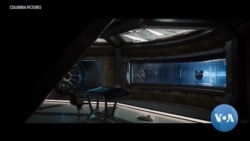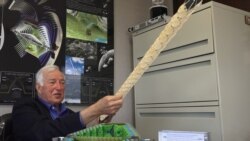This article was updated at 12:45 p.m. July 26, 2019.
Fifty years ago, the first humans landed on the moon. Could longer space flights to Mars and beyond happen 50 years in the future? What new technologies are needed for future space missions?
An aerospace engineer at Texas A&M University and a team of researchers have been working on a space habitat for long-term space travel. The project is funded by NASA’s Innovative Advanced Concepts (NIAC) Program, which fosters ideas that could revolutionize future space-related missions.
“The idea is to make a research facility that you could modify things as you go," said Robert Skelton, principal investigator of the project and Texas A&M Engineering Experiment Station (TEES) eminent professor in the Department of Aerospace Engineering. He was part of the team that designed the control systems for Skylab, NASA's first space station.
He said a space habitat might begin as a tourist destination.
"There’s a lot of folks that would pay a lot of money for a honeymoon in space,” he said.
As the habitat is enlarged in space, the long-term goal is to solve problems astronauts have been facing since Alan Shepard became the first American in space in the summer of 1961.
“We've been in space for 60 years, but in Zero-G (gravity) or microgravity, and it's very unhealthy," Skelton said. He explained, "The pressure of the fluid in your body feels gravity, so the pressure is higher in your feet than in your eye. So in space, the pressure is the same everywhere in the body, and that's too great for the eyes. It flattens the eye. So, all astronauts go into space with 20/20 vision, but few come back that way.”
That is just one example of health problems that occur in zero gravity. The habitat envisioned by Skelton and his team would rotate to create gravity, provide radiation protection, food for sustainability and growth capability.
This space habitat is designed with the concept of "tensegrity." Tensegrity is a combination of tension and integrity, similar to how the body moves with muscles and bones that strengthen each other. Skelton envisions the habitat being built using some materials outside the Earth.
“We want to design robots that can build tensegrity structures in space using materials from space regolith from the moon or regolith from the asteroids,” said Skelton.
Regolith is a layer of material such as rock or dust that sits on top of the bedrock of asteroids or the moon.
Skelton said the habitat can initially be in an orbit that goes from the Earth to the moon like a figure eight, to mine the moon and get supplies from Earth. Once built out — to the size of 500 meters, which is about five football (soccer) fields — Skelton envisions trees, animals, lakes, ponds and an area for growing crops. At its full scale, there would be room for 8,000 people.
Skelton said space should not only be accessible to astronauts who are in top physical condition.
“We want to open up the space and give some semblance of Earth, give open spaces and trees and so forth, so that citizens go there and could build a commercially sustainable occupations,” he said.
The space habitat project ends with a report to NASA. Skelton said if there is a next step, it would be to build structures and samples to test out the materials that could be used in this space habitat.








